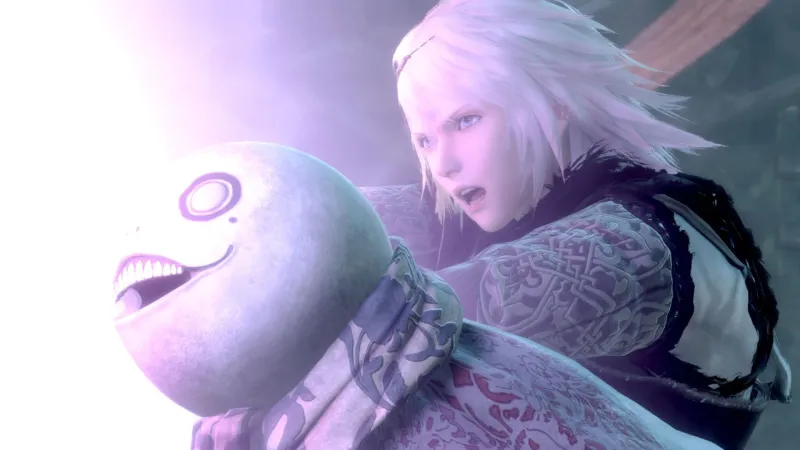
When Nier: Automata was released in 2017, it was a surprise success for publisher Square Enix and developer PlatinumGames, selling over 5 million copies. The action/RPG fascinated players with its thought-provoking story, interesting boss battles, and unconventional design. However, back in 2010, its predecessor – simply called Nier – set the stage. The original Nier wasn’t the most polished or impressive in the gameplay department, but it struck an emotional chord and became a cult hit.
People who missed that first entry are getting a new opportunity to see it at its best. Nier Replicant ver. 1.22474487139, which hits on April 23, is a re-release of the original with an array of interesting updates. We sat down with series creator Yoko Taro, producer Yosuke Saito, composer Keiichi Okabe, and Replicant’s development director Saki Ito to reflect on the game and their approach to bringing it back for a new generation.
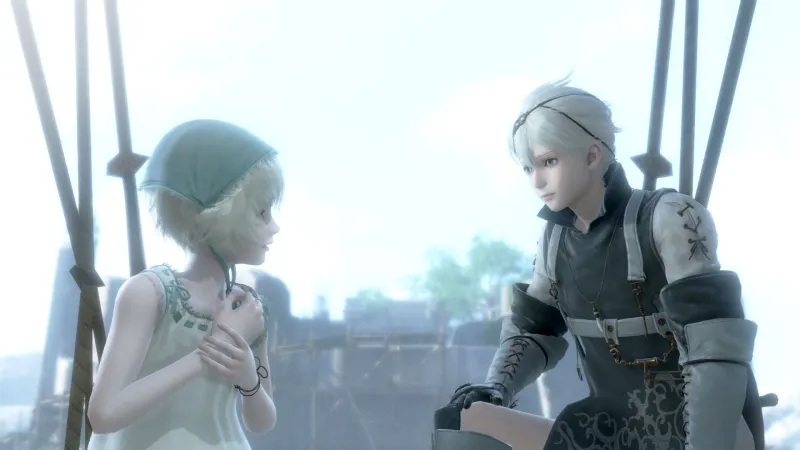
Replicant Versus Gestalt
Originally, two versions of Nier were released in Japan: Replicant for PS3, and Gestalt for Xbox 360. This will be North America’s first time experiencing Replicant. The difference? In Replicant, you play as an older brother trying to save his little sister rather than a father searching for a cure for his young daughter.
Yoko Taro (via his Zoom video stand-in, a Kermit the Frog puppet) says this impacts very little in terms of the story, and it was more of a marketing idea. “Whenever there is the same title being released on multiple platforms, people tend to compare the technical aspects of it, like framerate and graphics,” he explains. “In order to bring out a complete difference because they’re on different platforms, you might as well just use different characters, so that it will take their attention away from technical aspects and they’ll pay more attention to the more obvious difference of the characters.”
Producer Yosuke Saito confirms that the team struggled with the game’s marketing, which led to the two versions, but he thinks the bigger challenge was developing on multiple platforms. “It took quite a long time, somewhere upwards of a year to a year and a half,” he recalls. “We didn't see very much development in production, so that was definitely something that sticks in my mind. For a year and a half, we [just] had the Hansel and Gretel boss. And while we were working on this, I would hear Mr. Okabe’s voice in that BGM track and I kept listening to that.”
“Vocals aside, I think it is a very good song,” adds composer Keiichi Okabe, laughing.
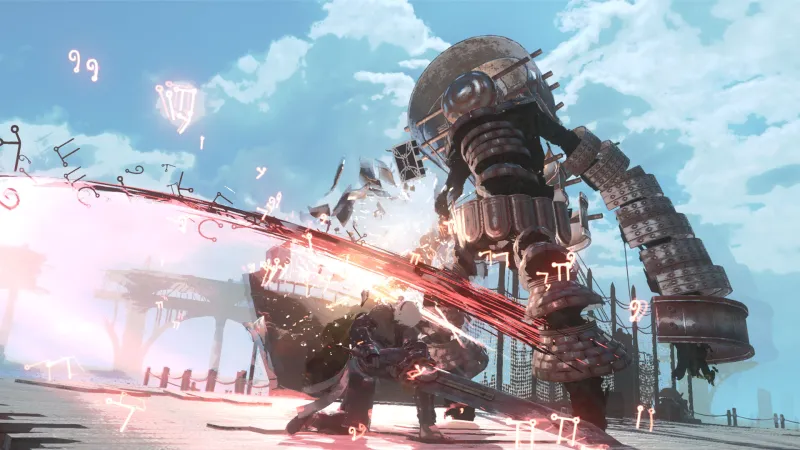
Finding Inspiration
When we asked Taro how he came up with his ideas for Nier, he said he’s giving us a different answer than what he’s told other members of the media. “I was actually quite tired with the production of games,” he says. “I thought, ‘This might be the last piece of work that I might create in video game media.’ And if I were to make this my last title, I wanted to do something that’s quite normal – a regular action/RPG.”
Taro says his mind went to Nintendo’s The Legend of Zelda: Ocarina of Time for inspiration, but when he consulted with Saito, Saito turned it down, saying he wanted “something unusual.”
“With doing a standard RPG with Square Enix, we have Dragon Quest and Final Fantasy,” Saito explains. “So my feedback to Mr. Yoko was, ‘Well,I don't think we can win against something like that.’”
Saito says this made them come up with the idea to go all-in on the action and focus on that aspect, but it proved more difficult than the team expected. “So in the pre-production phase, we were talking about having this be more action-oriented and less story-driven,” he says. “We wanted it to be more about gameplay … but when we looked at how it was coming along, I didn't feel confident that something that is just pure action would capture the hearts of those in the worldwide market. That's why we changed directions from there and leaned back into a more story-driven RPG”
Taro also didn’t think the gameplay could hook people by “just going into a dungeon and killing characters,” so he focused on the narrative to make it stand out. “Thinking about the story, I also wanted to go with something very traditional,” says Taro, who looked to Shonen Jump manga like Bleach and Hunter x Hunter for inspiration. “Those were quite twisted in their own right,” he says. “I feel like Nier [matched that].”
The team also wanted something a little lighter than what fans experienced with the dark and disturbing Drakengard games, which the Nier series is a spin-off of. “I was executive producer on Drakengard, and that was quite a story when it came out,” Saito says. “When we were thinking of our next installment called Nier, it was like, ‘Okay, maybe we should try something more happy.’ People might not see the happy aspect of Nier Replicant/Gestalt, but we feel it's a happy title.”
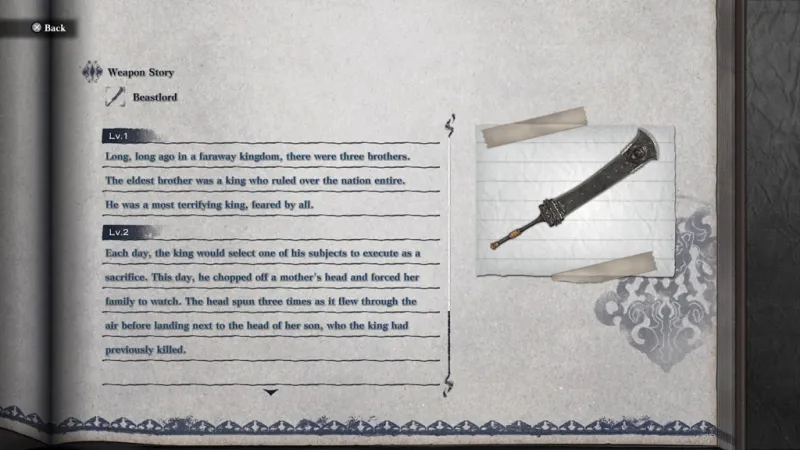
The Weight Of Words
While Nier focused on the power of words and their meaning, Taro had an ulterior motive for the theme. “I’m sorry if this breaks the illusion, but using words doesn’t require much effort and graphical depiction. It actually saves on resource allocation. We did our best to make a very appealing game and tried to incorporate the element of words and the weight they carry, but again, the start of it all was just trying to save some pennies.”
Nier’s cast featured the kind-yet-troubled Emil, hot-tempered Kaine, and egotistical talking book Grimoire Weiss. Kaine’s and Grimoire Weiss’ banter became a highlight for fans. Taro says he made it a point to have random, non-meaningful conversations to give players a breather from the chaos of battle. “In an RPG, you have many times where you’re trying to defeat this particular enemy and you’ve got these very strong emotions like, ‘I hate him.’ [I incorporated banter] as a way to relieve that stress.”
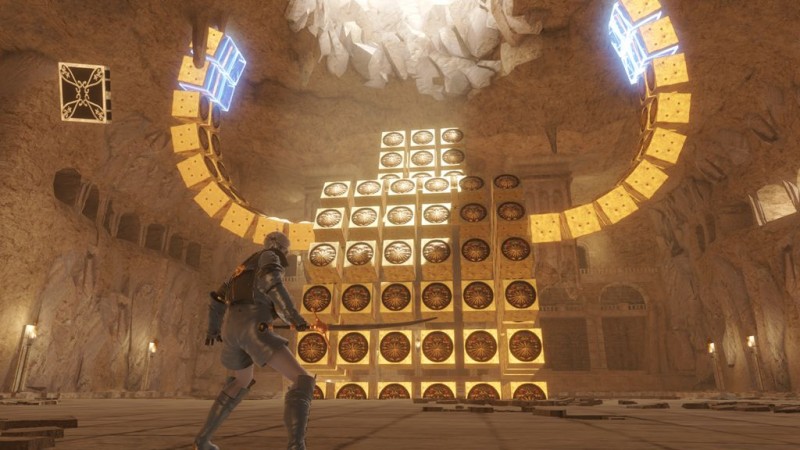
Favorite Moments
While Nier had an interesting cast, Yoko Taro’s favorite character isn’t from the main party members. “Fyra, the princess of the Facade Kingdom is one of my favorite characters,” he says. Taro thinks the whole part where the player enters Facade and learns about the kingdom in the desert is one of the game’s more memorable moments. He even toyed with casting Fyra and the King of Facade as the story’s protagonists, but as he wrote more, he realized they didn’t function the best in that role. "I'm sure people will understand what I mean by that as they play the game in that area,” he says.
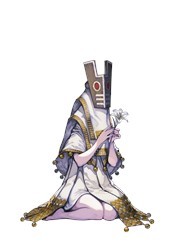
Replicant’s development director Saki Ito was a fan of the original game and actually went back to play it before starting work on Replicant ver. 1.22474487139. “Parts still really stick out to me,” he says. “Some of them being the very difficult decisions that I had to make. Just being able to go through with [the choices] and owning that experience of making it my story was something very memorable to me.” Without spoiling anything, he says a particular ending that involves a certain headstrong character remains his favorite.
It's an unexpected but fascinating battle that both Saito and Okabe love the most, but they find it memorable for much different reasons. Before we go further, we are warning that these next two paragraphs contain some *spoilers* from the original Nier.
Saito really loves the characters of Devola and Popola, so a big highlight for him was seeing how their roles transformed later in the game. “I’m sorry I’m kind of spoiling this; but when you fight them, and Popola was so nice up to that point and she just suddenly goes berserk - that’s my favorite part.”
